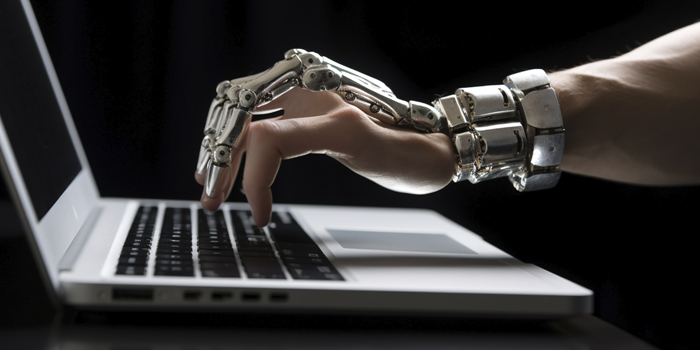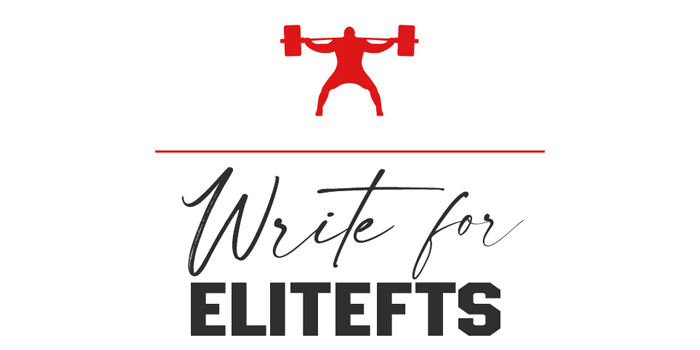
Sarah Connor, Skynet, Cyberdyne Systems, and the end of the world aside, AI has the potential to assist in a myriad of ways—even with your training.
For basic daily convenience and use, AI-powered recommendation systems analyze user data to provide personalized recommendations for movies, music, books, and products. Virtual assistants like Siri, Alexa, and Google Assistant use AI algorithms to perform tasks and answer questions. AI-powered translation services can bridge language barriers by quickly translating text or speech from one language to another, and the list goes on and on and on.
AI on the Medical Scale
On a grander and more noble, and dare I say human scale, AI has already been used to exponentially speed up medical research that has implications that could benefit millions of people around the world. For example, and in the most basic of terms, since the 1950s, scientists have been working to decode proteins and predict protein structures. Over the past 70 years, scientists have decoded structures of approximately 194,000 known proteins. Artificial intelligence, specifically DeepMind's AlphaFold program, when given this very task successfully deciphered and predicted 1 million structures in 2021 and that number is (as of this writing) over 350 million predicted structures. This exponential rate of scientific data has incredible potential for understanding diseases, enzyme design, drug discovery, personalized medicine, bioengineering, etc.
DeepMind's AlphaFold has analyzed the genetic codes of various organisms with sequenced genomes, and by predicting the structures of millions of proteins, scientists have already utilized AlphaFold's predictions to aid in developing new medicines. So for those not really paying AI much mind, the speed and power of AI is not something that is easily digestible and can be somewhat overwhelming for those who do understand the possible ramifications, both good and bad.
AI in Education
As a gym owner for over 15 years and powerlifter since the late 1980s, much of my life is spent in the gym. That said, my life outside of the land of barbells and weights is quite busy with my “real job” as an assistant principal. As an assistant principal, we have been utilizing AI for several tasks to expedite some educational processes in teaching and learning systems.
That said, we have also been dealing with AI in other ways. AI, in addition to being an incredible tool for science and efficiency in systems and data analysis, is also a pretty effective tool for students wishing to cheat their way to a better grade. As powerful as AI is, the low-hanging fruit for some is not medical breakthroughs, personal growth, or other honest versions of self-improvement, but rather as an incredibly effective tool for some nefarious means. More on that in a moment.
In addition to practical applications, convenient daily applications, world-changing medical improvements, science applications, and 99 percent of the non-end-of-civilization as we know it applications, if used correctly, AI can also be an amazing tool regarding your pursuit of strength, power, and muscle.
How AI Can Help in the Gym
AI such as ChatGPT can be utilized to analyze personal dietary data, including food intake and nutritional content, thus being an assistant in providing customized meal plans and recommendations for muscle growth. It can help factor in macronutrient requirements, calorie intake, and dietary preferences. AI systems can help deduct and make inferences about your training data and provide detailed performance information. AI can identify and deduce strengths, weaknesses, and areas for improvement, enabling individuals to adjust their training strategies for better muscle or strength development. Also, AI can generate workout routines with diverse exercises to target different muscle groups and prevent plateaus or help work around injuries.
All that said, AI is only as useful as the data you can provide. Also, remember that nothing can beat one-on-one person experience when it comes to strength, power, and muscle. Learning from those who have successfully been there and done that for a lifetime is key. AI can not tell you how 800 pounds on your back feels nor can it tell from your day-to-day lifting if you are shutting down your CNS from too much deadlifting and over-training. But it can be utilitarian and supplemental for other aspects of one’s strength and power and hypertrophy pursuits.
Best Practices to Ask AI Questions
Examples of AI in Education
Although nothing beats the experience of accomplished seasoned lifters as a main source for information, the reality is at most corporate gyms there are no significantly experienced lifters, and those new to the sport have difficulty veting the good online trainers and avoiding the snake oil salesmen trainers. This is where AI, specifically ChatGPT, could come in. But with ChatGPT, like training, what you get out of it is what you put into it. For AI language models like ChatGPT, it is all about how to ask the questions and what data you submit.
That is the massive difference between merely utilizing something like Google vs ChatGPT. ChatGPT can exhibit a degree of inference and deduction based on the patterns it has learned during its training. It can make educated guesses or provide plausible responses by leveraging the information it has been exposed to in its training data vs merely spitting out facts. ChatGPT is to Google what Google is to your local library. The difference is stark, to say the least.
Let’s go back to our high school academic dishonesty AI issue I mentioned earlier. A student looking to better a grade without putting in the time or effort could submit a request to ChatGPT that looks something like the following, “ChatGPT, please write me a summary of the book, Of Mice and Men.” Well, ChatGPT will do that with alarming speed and produce that summary quite nicely. It will write you something like this,
Chat GPT's Response
Of Mice and Men is a renowned novella by John Steinbeck, published in 1937. Set during the Great Depression, it tells the story of George Milton and Lennie Small, two migrant workers trying to survive in a world of economic hardship. George is intelligent and caring, while Lennie is mentally disabled but possesses great physical strength. The novella explores their deep friendship as they navigate the challenges of finding work and holding onto their dreams.
The narrative delves into the themes of companionship, loneliness, and the pursuit of the American Dream. Steinbeck portrays the struggles faced by marginalized individuals, emphasizing the vulnerability of those who are different in society. The tragic consequences that unfold reveal the harsh realities of a world that often crushes hopes and dreams. "Of Mice and Men" is a timeless tale that continues to captivate readers with its exploration of human nature, friendship, and the quest for a better life amidst adversity." -ChatGPT
Being Specific When Using AI
So in a way, ChatGPT did exactly what the user, in this case a high school student, wanted it to do. It created for them a summary of the book so they could get back to more pressing issues - like TikTok.
Now, what if the student had used ChatGPT this way, “ChatGPT, please write me a three-page summary of Steinbeck’s, Of Mice and Men. Please include three run-on sentences and two misspelled words, but make those words fairly complex so as not to misspell basic words. Please then grade this paper based upon state proficiency levels of a high school senior.” Then ChatGPT spits out this paper to the student in a matter of moments. The student looks at the paper with its three run-on sentences and two misspelled words and sees that the paper earned a letter grade of an A based on the submitted proficiency level. This student, who is not an A student, then cuts and pastes the summary back to ChatGPT and says, “ChatGPT, please re-write this paper as it is, but with the quality only worthy of a B letter grade.”
See where I am going with this? ChatGPT and all of the AI systems are only as good as the information and questions you give to them.
Examples for Lifters
Here is another example. You could say, “ChatGPT, please write for me a calorie deficit meal.” ChatGPT would then spit something out like:
"Grilled Chicken Breast: A four-ounce (113 grams) serving of grilled chicken breast is a lean protein source that is relatively low in calories. It provides essential amino acids and helps promote satiety. Steamed Broccoli: Broccoli is a nutritious and low-calorie vegetable. A serving of steamed broccoli, around one cup (156 grams), is rich in vitamins, minerals, and fiber, while being relatively low in calories. Side Salad: A side salad consisting of mixed greens, such as lettuce or spinach, along with sliced cucumbers, cherry tomatoes, and a light vinaigrette dressing can be a refreshing and low-calorie addition to the meal. The salad adds volume and fiber while keeping the calorie content in check." -ChatGPT
But that does not help at all. Now, if you say to ChatGPT, “ChatGPT, I am 5’8”, 223 pounds, a 35-year-old male with 14 percent body fat who trains with weights five days per week for 80 minutes per workout and does cardio three times per week for 20 minutes each day with my heart rate averaging 105 beats per minute. Please create for me six daily meals, consisting of a total of 35 percent protein, 40 percent carbohydrates, 25 percent fats, and no more than 15 grams of saturated fat that will be low enough in total calories to help drop my body fat down to nine percent in ten weeks without losing muscle mass. Well, ChatGPT will give you a completely different type of answer.
First, ChatGPT will explain the formula for basal metabolic rate and TDEE. Then, it will make the adjustments for one’s height, weight, age, gender, and energy expenditure.
Use AI as a Tool, Not THE Tool
This is not unlike when you go online and Google "powerlifting programs." You get an abundance of answers. But when you ask that successful veteran powerlifter in your gym to help you put something together, a good powerlifter will start with questions. Questions like: how many days can you train per week, what are your max lifts, what are your short-term, medium-term, and long-term goals, and do you have any injuries to work around? If they are really good, they will take a look at your technique.
So, like that experienced lifter, AI can be a tool to help you when you do not have those experts to reach out to. But its ability to be of use to you comes down to the information you supply it with.
RECENT: The Urgency of Meet Prep Training
One more quick example. I asked ChatGPT about protein powders and got an answer based on the data ChatGPT has in its database. That said, and based on information from a friend of mine with a PhD in nutrition, I fed ChatGPT data inquiring. I inquired about the most effective combination of three types of protein powders out of the many powders I listed based on amino acid profiles. Also, I asked for the most effective percentages when combining those three. I asked it not to go over 30 total grams in weight when combining the three.
The specificity made the difference and my PhD friend verified the answer supplied that AI came up with the correct answer based on actual nutritional and scientific data. All that said, know that ChatGPT is not perfect and will make mistakes. As high-tech as it is, it is also currently as crude as it ever will be and its database, according to OpenAI, is only through September of 2021. So keep that in mind.
AI is a Tool for the Future
Nutrition and lifting aside, I have asked ChatGPT fairly sophisticated questions over the past months, and each week I ask the same type of deductive type questions. Each week, the answers are getting better and better to the point of it being a little scary, to me anyway. If you have already stuck your toe into this AI world, you know that uneasy feeling quite well. If you have not, this is a feeling straight out of Alvin Toffler’s 1970s book, Future Shock.
A word of caution, as with anything in the world of strength, power, and muscle, beware of those big online voices with little or no personal competitive experience on the powerlifting platform or bodybuilding stage, as they are also using ChatGPT. They are using it, but then they are charging you for their financial gain without knowing the nuances of you as a power athlete. The solution is to seek out expert human assistance first if you are lucky to have that at your gym. Or seek out a reputable, seasoned, and knowledgeable online expert, such as Dave Tate, who has been there and done that for a lifetime. Utilize AI as a supplemental tool to learn from and to use as an additional resource for your strength, power, and muscle goals.
Conclusion
From the library to Google to AI, it is not just information that can make a difference in your training, but sound, quality, and accurate information. What you provide the AI model you choose will be a determining factor in what you get out of it. But keep in mind that even the current AI models are only as good as the data they have. So again, use phrases such as, “Based on scientifically reviewed data found in reliable and reputable published studies,” when you are asking questions and want vetted answers.
Feel free to consider AI as a possible supplemental tool, as your strength, power, and muscle destiny are in your own hands. Or, as it has been similarly stated, "The future is not set. There is no fate but what we make for ourselves."- The Terminator, Cyberdyne Systems Model 101.
Wishing you the best in your training and meet prep.
Eric Maroscher is the owner of the Monster Garage Gym. Cofounded by Phil Daniels, NFL Defensive End, Monster Garage Gym is a premier powerlifting gym in the United States. Eric is the leader of the Maroscher Powerlifting Team, a two-time WPC World Powerlifting Champion, two-time APF National Powerlifting Champion, WPC North American Powerlifting Champion, and a multi-time APF Illinois State Champion.










